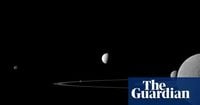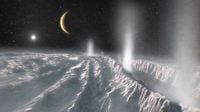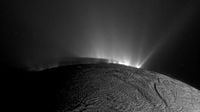Saturn’s moon Enceladus, a tiny, icy world more than 800 million miles from Earth, has once again captured the imagination of scientists and stargazers alike. On October 1, 2025, a flurry of scientific reports—anchored by a study published in Nature Astronomy—revealed that Enceladus’ geysers are not just spewing water and ice into space, but also a surprising variety of complex organic molecules. These findings, based on a fresh analysis of data from NASA’s Cassini spacecraft, have reignited hopes that this distant moon might harbor the necessary ingredients for life.
NASA’s Cassini spacecraft, which orbited Saturn from 2004 until its dramatic plunge into the planet in 2017, made history in 2008 when it flew through the towering plumes erupting from cracks near Enceladus’ south pole. These plumes, stretching up to 6,000 miles above the moon’s surface, provided Cassini’s Cosmic Dust Analyzer an unprecedented opportunity: to sample freshly-ejected ice grains at a blistering 40,000 mph (64,800 kph). Unlike older grains found in Saturn’s E ring—which could be hundreds of years old and altered by cosmic radiation—these new samples offered a pristine glimpse into Enceladus’ hidden ocean.
“With more knowledge, experience, and experiments, we reanalyzed the flyby data in more detail and understood features that we detected for the first time,” said Nozair Khawaja, lead author of the study and a scientist at Freie Universität Berlin, in an email to Mashable. The team’s closer look revealed a dazzling chemical diversity: ring-shaped carbon molecules, oxygen-linked compounds such as aldehydes, esters, alkenes, ethers, and even traces of nitrogen-oxygen compounds like acetonitrile or pyridine. Many of these molecules are familiar on Earth as building blocks of fats, oils, and, crucially, amino acids—the very molecules that form proteins and underpin life as we know it.
“There are many possible pathways from the organic molecules we found in the Cassini data to potentially biologically relevant compounds, which enhances the likelihood that the moon is habitable,” Khawaja told ScienceAlert. However, he and other researchers are quick to add a note of caution: “Being habitable and being inhabited are two very different things. We believe that Enceladus is habitable, but we do not know if life is indeed present,” said Fabian Klenner of the University of Washington, as reported by the Associated Press.
Enceladus is a small moon—just 310 miles (500 kilometers) across—but it punches above its weight in terms of scientific intrigue. Beneath its frozen exterior lies a salty, global ocean, kept liquid by tidal forces and possibly warmed by hydrothermal vents on the seafloor. These vents, if they exist, would be similar to those found in Earth’s deep oceans, where life flourishes in complete darkness, fueled by chemical energy rather than sunlight. The detection of organic molecules in Enceladus’ plumes suggests that comparable processes could be underway beneath its icy crust.
“We are confident that these molecules originate from the subsurface ocean of Enceladus, enhancing its habitability potential,” Khawaja emphasized in a statement to ABC News. The team’s laboratory experiments further confirmed that the molecular signatures detected were genuine and not artifacts of the high-speed collisions between the ice grains and Cassini’s instruments. By recreating these impacts in the lab, they demonstrated that the chemical signals observed were intrinsic to the grains themselves.
Over the years, Cassini has detected five of the six key elements required for life on Earth at Enceladus: carbon, hydrogen, nitrogen, oxygen, and phosphorus. Sulfur, the sixth element, remains elusive, but scientists are running experiments to see if it might simply be harder to detect. The presence of these elements, alongside the newly discovered organic molecules, means Enceladus “ticks all the boxes” for a potentially habitable environment, according to Khawaja.
Enceladus’ jets don’t just intrigue scientists—they also contribute to Saturn’s E ring, as the ejected particles eventually settle into orbit around the planet. Previous analyses of E ring material had hinted at organic compounds, but the question lingered: were these molecules truly from the moon’s ocean, or had they been altered by their long sojourn in space? The new study’s focus on fresh grains, sampled just minutes after their ejection, provides the strongest evidence yet that the organics are indeed native to Enceladus’ interior.
The implications are profound. On Earth, similar organic molecules are produced by hot water-rock reactions near seafloor vents—environments that many scientists believe could have been the cradle of life on our own planet. If Enceladus’ ocean hosts analogous chemistry, the possibility of life, however simple, cannot be dismissed. “Having a variety of organic compounds on an extraterrestrial water world is simply phenomenal,” Khawaja told the Associated Press. “There is much more in the data that we are currently exploring, so we are looking forward to finding out more in the near future.”
The new findings have injected fresh urgency into plans for future missions to Enceladus. The European Space Agency is in the early stages of planning a mission to orbit and land on the moon, with the goal of sampling its plumes and surface. China has also proposed a landing mission, while NASA’s Europa Clipper, set to begin orbiting Jupiter in 2030, will investigate another icy ocean world: Europa. Both Europa and Enceladus are considered prime candidates in the search for extraterrestrial life within our solar system.
“Underground oceans on moons are perhaps the best candidates for the emergence of extraterrestrial life in our solar system. This work only confirms the need for further studies,” said University of Kent physics professor Nigel Mason, who was not involved in the latest findings, as quoted by the Associated Press.
Yet, as the science advances, so does the sense of wonder. Could a moon barely 500 kilometers wide, orbiting the ringed giant Saturn, really host the chemistry of life? The evidence grows stronger, but the ultimate answer remains locked beneath Enceladus’ icy shell, waiting for the next daring spacecraft to uncover its secrets.
For now, scientists and dreamers alike keep their eyes on Saturn’s shimmering moon, hopeful that the next chapter in our search for life beyond Earth is about to unfold.






